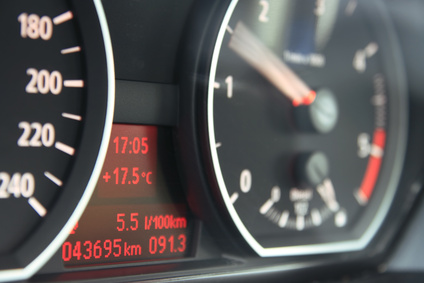
Your car gets the energy it needs to run by igniting a gasoline-air mix. For the car to run properly, it's important to spray the fuel-air mix into each cylinder at the right moment in the cycle. Unlike older cars, which typically relied on carburetors, most cars built since the 1980s use a system called fuel injection to mix fuel and air and properly time its release.
The fuel rail is part of the fuel injection system in your car; it runs parallel to and at a short distance from the engine block. It's essentially a metal pipe that channels fuel to the fuel injectors, which will in turn spray the fuel into the engine's air stream. The fuel injectors protrude from the fuel rail into the intake manifold like a row of plugs connecting the one to the other.
The gasoline pressure in the fuel rail is controlled by the fuel pump and the fuel pressure regulator (assuming that both are working properly). The fuel rail must be strong enough to contain fuel under pressure without breaking and provide a steady supply of gas to all the injectors.
The fuel injectors are basically computer-controlled valves; since the fuel in the rail is under pressure, when the computer sends an electronic signal to the injector it opens, permitting a brief burst of fuel to spray into the engine air stream. The fuel atomizes as it's released, ensuring that the fuel and air are well-mixed as they're sucked into the cylinder.
The computer or "brain" of the car is constantly monitoring inputs it receives from sensors like the manifold air pressure sensor, the oxygen sensor and the engine coolant temperature sensor. It uses these inputs to "decide" what fuel-air mix is appropriate and adjust the fuel-air mix as necessary. Rather than adjusting the fuel pressure the "brain" adjusts the pulse width or the length of time a given injector remains open; the fuel pressure in the rail is controlled by the pump and the regulator and remains high.
Fuel in an injection system is at high pressure; you should always relieve the pressure in the fuel system before you try to disconnect the fuel rail. Failing to observe these precautions could put you and your safety at risk. It's best to keep shop towels handy to soak up any fuel that drains out as you disconnect the rail for maintenance.